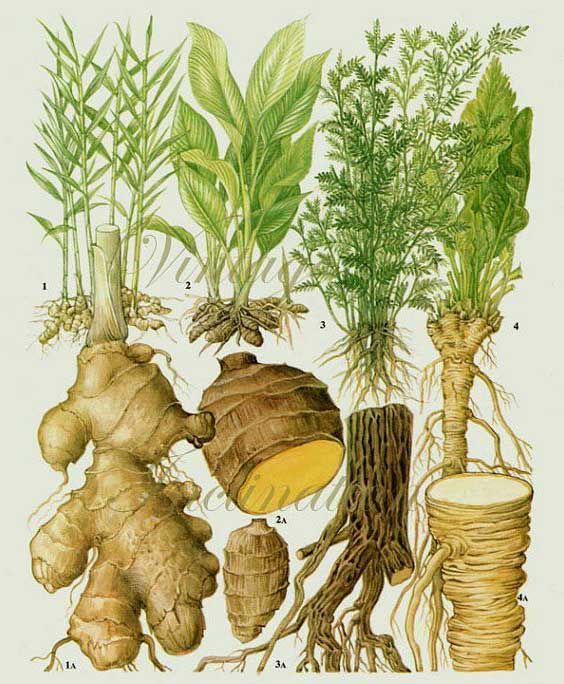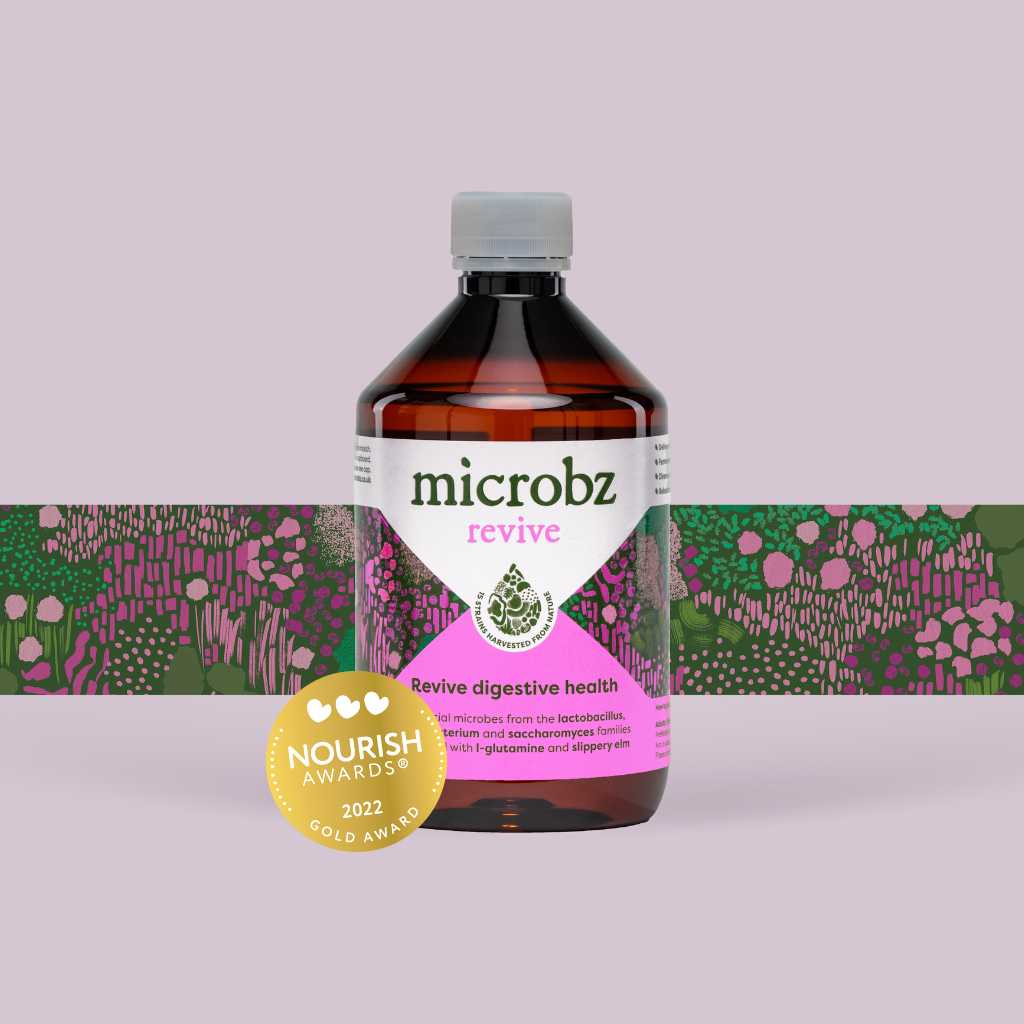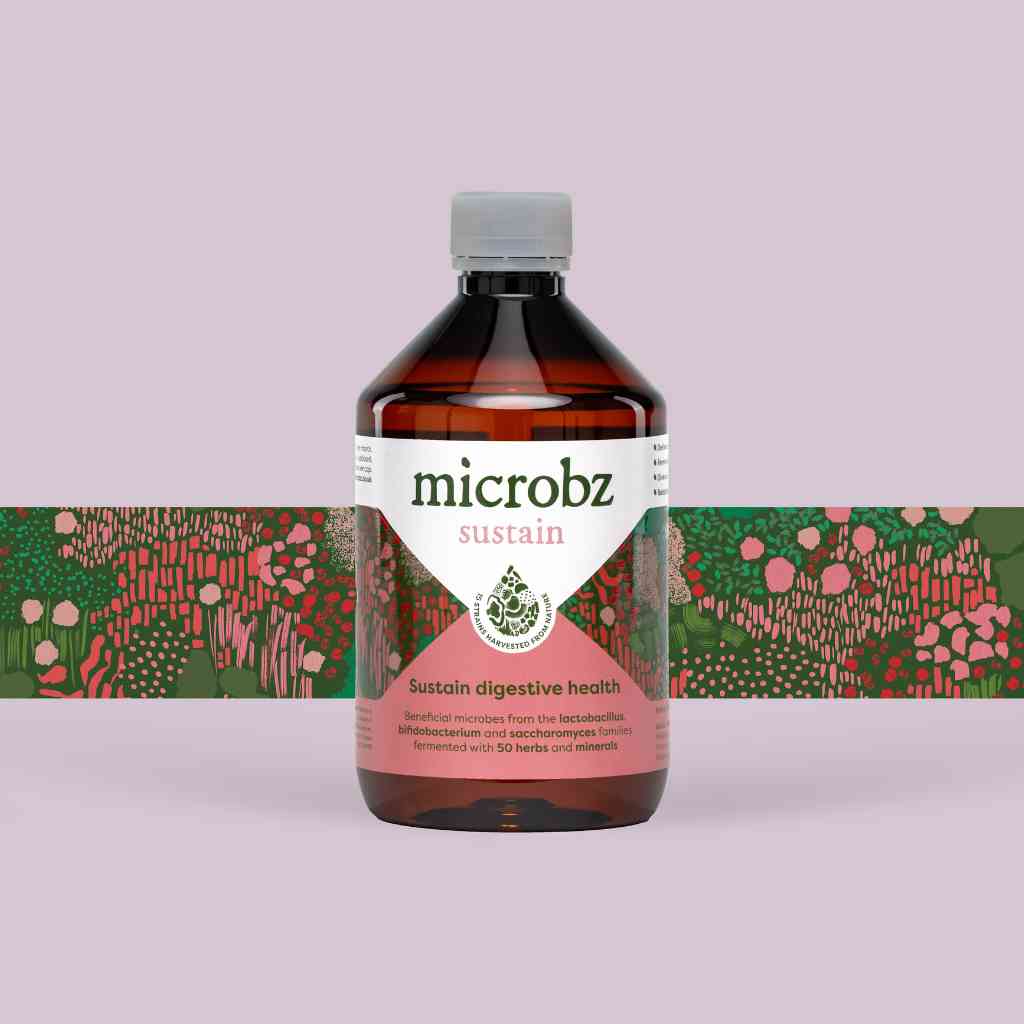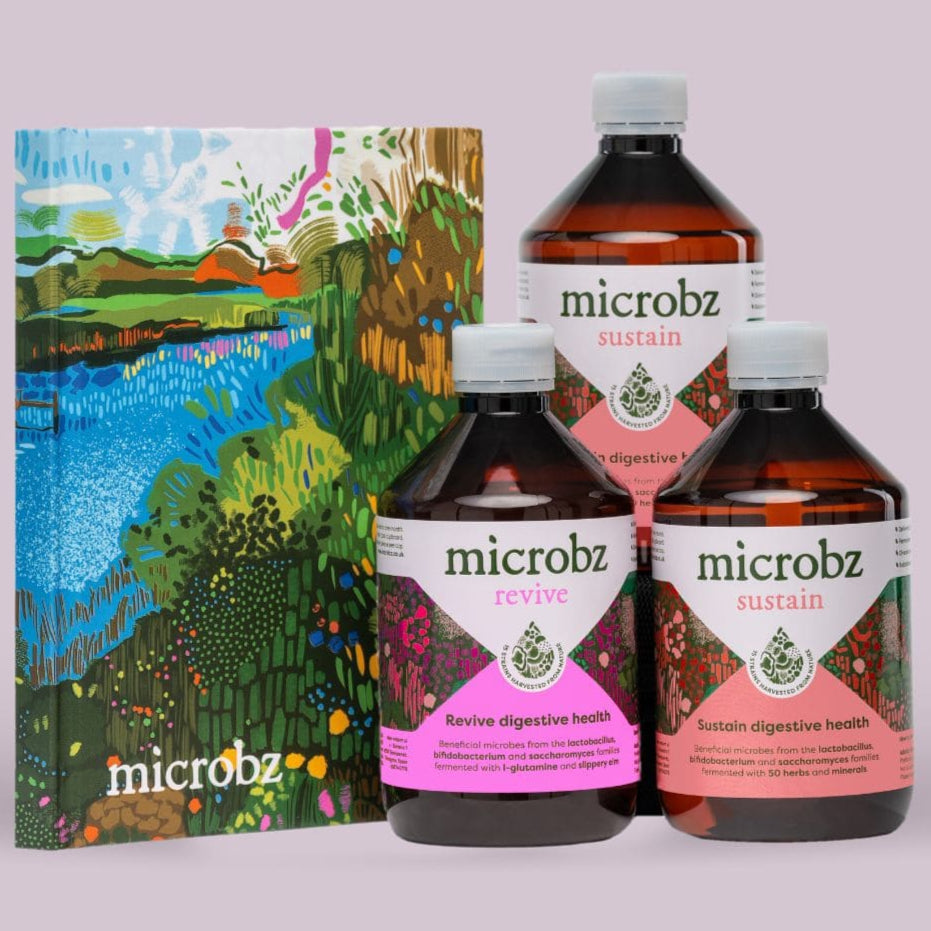Ginger
Zingiber officinale

Family: Zingiberaceae
Which probiotic is it in?: Ginger is a key herb in Sustain, Sleep and Kids.
Habit and cultivation: Native to tropical Asia and also widely cultivated in Fiji and Queensland. Ginger is grown by dividing the rhizomes with fresh shoots sprouting off the original. It requires semi-shade, in a moist, rich soil. Drought and frost tender. The rhizome is harvested after the plant dies back and is used fresh or dried.
Actions (known for): Carminative, anti-inflammatory, analgesic, anti-emetic, anti-platelet, demulcent, diaphoretic, expectorant and metabolic stimulant.
History of Ginger
Parts used from the Ginger
The rhizome is harvested after the plant dies back and is used fresh or dried.
Constituents (bio available chemicals):
Volatile oil 1-3% including zingiberene and camphene. Phenols including zingerones, gingerols and shagaols. Oleoresin 4-5%.
Nutritional constituents:
Vitamins: A, B-complex and C. Minerals: calcium, iron, phosphorus, potassium, sodium and magnesium.
Indications:
Arthritis, peripheral circulation, intestinal colic, dysmenorrhoea, flatulence, endometriosis, fever and nausea.
Dosage:
Liquid Extract: (1:2) 5-20ml per week. Dry Herb: 0.75-3g per day.
British Herbal Pharmacopoeia
Colic, flatulent dyspepsia. Approved by Commission E for dyspepsia and motion sickness.
Cautions for therapeutic doses
Avoid high doses in pregnancy.




